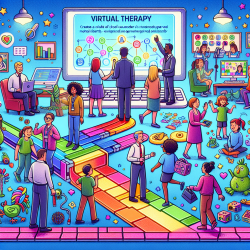Introduction
Managing chronic pain is a daunting challenge for primary care practitioners, often due to limited training and reliance on traditional pharmaceutical treatments. However, the landscape is evolving with innovative programs like Project ECHO (Extension for Community Healthcare Outcomes), which aims to bridge the gap between primary care providers and specialists through tele-mentoring. A recent study titled "Keep trying”: a qualitative investigation into what patients with chronic pain gain from Project ECHO" sheds light on the indirect yet positive impacts of this initiative on patients and practitioners alike.
Understanding Project ECHO
Project ECHO employs a hub-and-spoke model, connecting a team of specialists (the hub) with primary care practitioners (the spokes) through weekly videoconferences. This interprofessional approach democratizes knowledge, reduces disparities in healthcare access, and fosters a community of practice. While the primary focus has been on practitioner benefits, this study delves into the patient perspective, revealing the nuanced impacts of Project ECHO on chronic pain management.
Key Findings from the Study
The study utilized in-depth interviews with 20 patients whose cases were presented at Project ECHO sessions. Despite the indirect nature of the impact, the findings were overwhelmingly positive:
- Patient Empowerment: Patients expressed satisfaction in contributing to research and appreciated their practitioners' efforts to seek expert advice on their behalf.
- Alignment of Goals: There was a strong alignment between patients and practitioners regarding pain management goals, underscoring effective communication and shared understanding.
- Indirect Benefits: While only a few patients noticed direct changes in their treatment, many felt positive about the attention their cases received, which bolstered their trust in their healthcare providers.
Implications for Practitioners
For practitioners, the study highlights the importance of engaging in programs like Project ECHO to enhance their skills and improve patient outcomes. Here’s how you can leverage the findings:
- Participate Actively: Engage in Project ECHO sessions to gain insights from specialists and peers, enriching your approach to chronic pain management.
- Foster Communication: Maintain open lines of communication with patients, aligning treatment goals and ensuring they feel involved in their care journey.
- Explore Non-Pharmaceutical Options: Consider integrating non-pharmaceutical strategies recommended by Project ECHO, such as mindfulness and exercise, into your treatment plans.
Encouraging Further Research
The study opens avenues for further research into the broader impacts of Project ECHO across different regions and healthcare settings. Practitioners are encouraged to contribute to this growing body of knowledge by sharing their experiences and outcomes.
Conclusion
Project ECHO represents a transformative approach to chronic pain management, offering indirect yet significant benefits to patients and practitioners. By participating in this collaborative model, practitioners can enhance their skills, improve patient trust, and ultimately contribute to better healthcare outcomes.
To read the original research paper, please follow this link: “Keep trying”: a qualitative investigation into what patients with chronic pain gain from Project ECHO.










